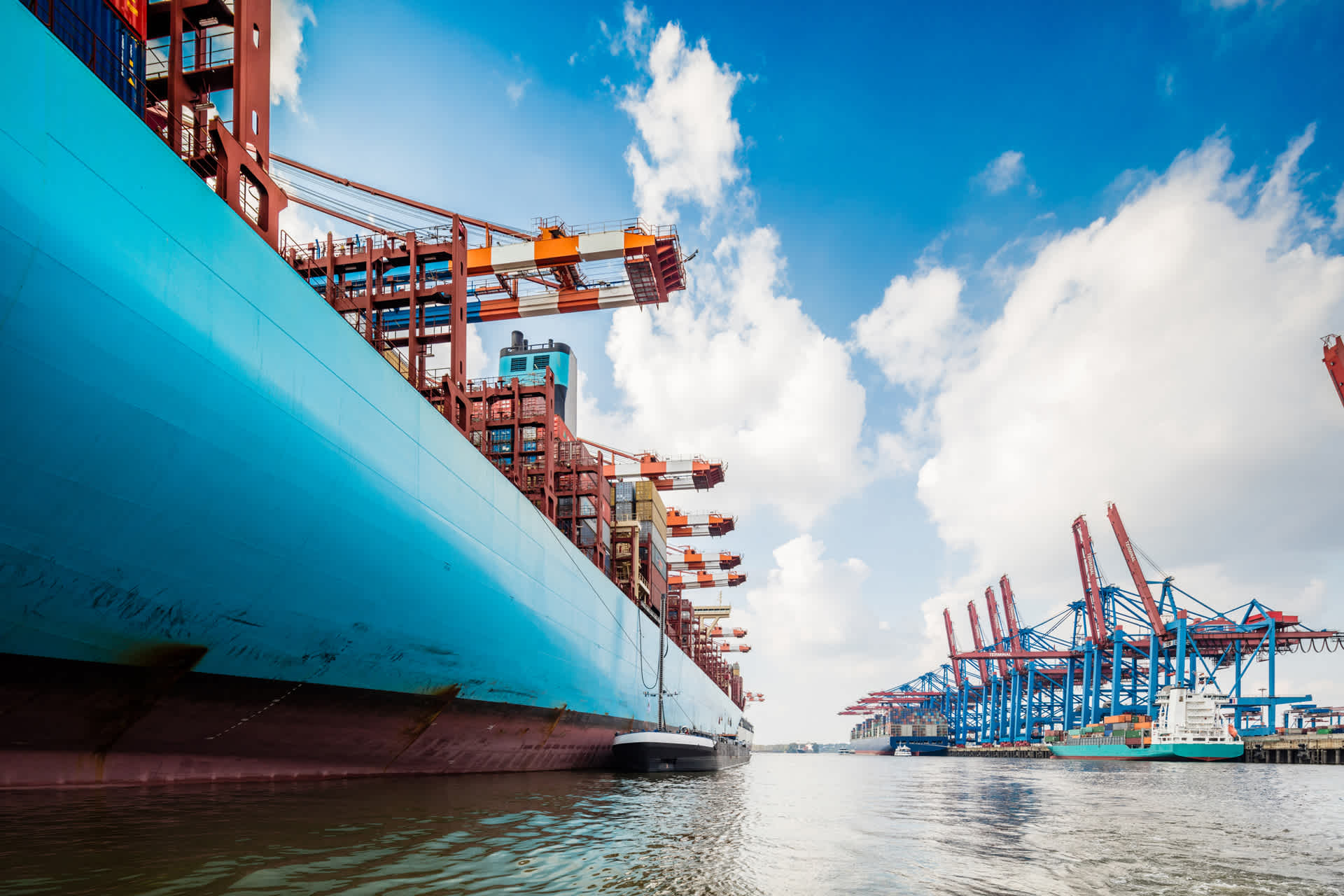Global Logistics Update
Freight Market Update: January 25, 2022
Ocean and air freight rates and trends; customs and trade industry news plus Covid-19 impacts for the week of November 16, 2021.
Freight Market Update: January 25, 2022
North America Freight Market Update Live: Thurs, January 27 @ 8:30 am PST | 11:30 am EST
European Freight Market Update Live: February 15 at 16:00 CET / 15:00 GMT
Get the latest information on the European Ocean and Air Freight Market. Spend 30 minutes with our experts, including time for Q&A.
Ocean Freight Market Update
Asia → North America (TPEB)
- Congestion, dwelling vessels pile up on both East and West coast ports with Charleston becoming the newest port to see a severe spike in congestion. Shippers with urgent cargo, or those working to replenish depleted inventories, are willing to pay premium rates for scarce space, although some softening is expected to be seen post-CNY due to uncertainties surrounding when production will resume at origin. Overall though, demand is expected to remain strong in the coming months on TPEB.
- Rates Rate levels remain elevated, and the premium market is strong.
- Space Critical
- Capacity/Equipment Critical/Severe Undercapacity
- Recommendation Book at least 2-4 weeks prior to CRD. Consider premium options and carrier IPIs through the PSW gateway. Be flexible in regard to equipment and routings.
Asia → Europe (FEWB)
- Space and equipment crunches continue into the Chinese New Year period as market demand consistently exceeds supply. Space and equipment remain very tight due to frequent blank sailings and port omissions. The situation is exacerbated by the trucking shortage at origin. Carriers are overcommitted and are limiting booking acceptance or rolling shipments. With continuous vessel delays and shifts, schedule reliability is very low and delays for pre-CNY sailings will have a significant impact into the post-CNY period. This week, many factories in China are already starting to close down for the holidays.
- Rates Rates have increased slightly during January in the lead up to the pre-CNY peak season.
- Space Extremely critical space situation
- Capacity/Equipment Severe equipment shortage across all Asia origins.
- Recommendation Book at least 3 to 4 weeks prior to CRD. Consider premium options, which may be limited. Be flexible in regard to equipment.
Europe → North America (TAWB)
- Schedule reliability No improvement expected in the short terms due to continuous congestion in both major European and US ports.
- Congestion at USEC ports is manageable at the moment. Savannah and Charleston are improving while Houston is getting more congested. USWC remains heavily congested at both LA and LB despite improvement on the quay. Some blank sailings announced by lines in February.
- Rates Ocean levels continue to remain high with further increases expected as from February.
- Space Critical, especially to the USWC
- Capacity/Equipment Capacity remains tight for both North Europe and Mediterranean services. Better equipment availability at port. Shortages remain at inland depots.
- Recommendation Book 5 or more weeks prior to CRD. Request premium service for higher reliability and no-roll guarantees.
Indian Subcontinent → North America
- Demand for space is increasing as we begin ISC’s traditional peak season. This time period is the last quarter of India’s financial calendar where we see demand rise as manufacturers look for a strong close to their books to end the year.
- Rates increased in 2H Jan. Expected to further increase in February
- Space to the USWC is and will remain a challenge into 2022. Port omissions on services to the USWC continue to cut capacity out of the ISC. Recommendation is to move on premium services or look for alternative routing to USEC and transload to final destination.
- Space to the USEC remains steady with a good mix of ocean carriers and services. Some port omissions are occurring at Savannah and Charleston due to ongoing congestion.
- Equipment remains a challenge at smaller Indian ports in the South and South-East as well as inland container depots (ICDs). Carriers are encouraging shippers’ use of their own origin carriage services to mitigate equipment shortages. Equipment is normalized at key ports such as Nhava Sheva and Mundra. Recommendation remains to load via wet port instead of using ICDs to avoid delays and accessorial fees.
North America → Asia
- Vessel arrivals and available capacity remain fluid for USWC POLs. Rail availability over the USWC is limited as carriers are strictly adhering to allocations. USEC situation sees Savannah operations improving but increasing delays around New York. The erratic vessel schedules continue to create void sailings and delays in schedules creating significant challenges with posted earliest return dates and vessel cut-offs at the port.
- Rates There have been a few GRI advisories posted for early February specific to transshipment ports as well as Oceania destinations.
- Equipment Deficits on containers and chassis continue to plague IPI origins. Availability for standard equipment at ports has not been an issue, but any special equipment is hard to come by.
- Recommendation Please place bookings 4 to 6 weeks in advance to secure your equipment and vessel space.
North America → Europe
- There is available capacity on the TAEB trade from the US East and Gulf Coasts although there have been some instances where conditions were tight due to operational issues caused by phasing in new vessels. US West Coast service to Europe is extremely tight due to void sailings and skipped ports caused by systematic delays.
- Rates One small GRI announced for February for the US East Coast.
- Equipment Deficits are still plaguing IPI origins. Availability for standard equipment at ports has not been an issue, but any special equipment is hard to come by.
- Please place bookings 3 to 4 weeks in advance for East Coast/Gulf sailings and 6 weeks for Pacific Coast sailings.
Air Freight Market Update
Asia
- N. China: Demand is picking up in the lead up to LNY. Capacity is quite full and TPEB rates have increased. Based on the current supply in the market, it is likely that this momentum will continue through the LNY holiday.
- S. China: TPEB flights continue to be canceled after positive Covid cases but demand is slowly picking up before LNY causing rates to increase. FEWB rates continue to decrease as demand remains relatively low.
- Taiwan: The market remains stable with no significant changes in rates or capacity before LNY. SFO and ORD are seeing the most capacity constraints but other destinations are still manageable.
- SE Asia: Demand ex-BKK continues to be soft with no peak expected prior to LNY. Rates continue to drop as carriers look to fill their open capacity. Ex-Vietnam TPEB demand remains weak and rate levels have dropped, while FEWB demand remains stable. Most factories will be closed during 1/29-2/6.
Europe
- Demand continues to be stable as we near the end of Jan. There has been a slight increase in rates to the US West Coast, but overall rates do remain at a stable level
- Limited disruption from 5G roll out in the US. Some 747-800 freighters re-routing but the 5G roll-out was postponed. Airlines are uncertain on the future impact. Expect more details to come in the following weeks.
- Capacity is stable for the moment, with airlines injecting intra-Europe schedules to feed Transatlantic flights. If the lead time can take it, a deferred option can be very suitable, and offer rates below the standard market level
- Congestion manageable at key export hubs in the EU
- Istanbul airport was closed briefly due to heavy snowfall. Manage expectations if moving cargo from this region, but so far there is a limited impact on cargo movement
- Advice remains in place ex-EU: continue to place bookings early for optimal rates and solutions.
Americas
- US export demand is slowly increasing during the second half of January. Capacity is manageable.
- LAX/ORD/JFK terminals have slightly reduced the inbound backlog cargo, which has a positive effect on the export side.
- Larger shipments from major outbound gateways can take 2 to 3 days from booking to uplift.
- The US has experienced some domestic and international flight cancellations and/or delays due to Omicron.
- Most terminals provide reduced free time for storage, and have earlier close-outs for exports to accommodate throughput times and screening requirements.
- Rates to Latam, Europe, and Asia are slightly increasing compared to the first two weeks of January.
- Congestion at the European hubs is improving which is slightly reducing the average dwell time at destination.
Trucking & Intermodal
Europe
- Truck, barge and rail capacity are still under pressure due to high demand. Situation in the United Kingdom remains tight: general driver shortages and Covid-19 sickness are the main drivers. Same for the continent however barge and rail ease the pain on main lanes
- Rates Annual increases on main freight and standard accessorials between 5 and 10%, ad hoc surcharges to be expected in case demand increases
- Space Sufficient space on barge and rail.
- Recommendation In general early bookings and flexible unloading/delivery times at receiving warehouses are key to obtain truck, barge and rail slots.
Updates from Flexport's Customs & Compliance Team
CBP Begins Modernized ACE Portal Rollout
CBP is rolling out a new modernized ACE portal over the course of this year. Beginning February 20, 2022, ACE users can no longer login in from the current legacy ACE Portal login page. If you have an ACE account, you need to click on "Access the Modernized ACE Portal" and follow the steps provided.
President Biden Remains Keen on Keeping Section 301 Tariffs
While expressing some desire to eventually roll back the Section 301 Tariffs, President Biden said, in his roughly two-hour press conference last week, that the tariffs will remain in place for now. He cited the US Trade Representative’s ongoing work to ensure China meets their commitments under the 2020 Phase 1 agreement.
ICYMI: HS 2022 Updates Will Be Effective on January 27, 2022
The publication of a Presidential Proclamation in the Federal Register has confirmed the World Customs Organization Harmonized System Update to the Harmonized Tariff Schedule of the U.S. (HTSUS) will be effective on 27 January 2022. A new report from the International Trade Commission outlines the complete list of the changes and descriptions to the HTSUS.
Read More: Your Must-Read Roadmap to Optimize for New HTS Codes
Factory Output News
- US Manufacturing growth slowed for the sixth straight month in January, according to the IHS Markit Flash U.S. Manufacturing PMI. New order growth slowed to the softest rate since July 2020, with manufacturing firms noting that customers reduced spending amid increases in costs. Source
- Vietnam BW Industrial’s project in the Bac Tien Phong Industrial Zone to expand and boost ability to serve export manufacturers in view of growing demand. Source
- Cambodia A bilateral FTA between Cambodia and Korea expected to enter into force early this year, opening up more markets to Cambodian products and attracting more investments for exports. Source
- Indonesia Export permits for palm oil required as Indonesia tries to manage the increasing price of cooking oil. Source
- Singapore Non-oil exports grew by 18.4% in December, making 2021 the best year since 2010. The demand for electronics and pharmaceuticals helped boost shipments. Exports to China are said to slow with the rise of Omicron cases and China’s zero covid policy. Source
- Bangladesh Textiles and apparel exports to US has increased by 31% last year according to OTEXA US. Source
Freight Market News
New York Ports Close to Outpacing California in Imports The Loadstar reports that the port of New York and New Jersey have already beat out Long Beach as a bigger US import container hub, and is on track to outpace Los Angeles. This is due to the accelerating coastal shift of imports to the less-congested east coast, as shippers hope for greater predictability and expediency to inland destinations.
Read More: Ocean vs Air: Diversification Matters More than Ever
Supply Chain Indicators to Navigate Chaos A number of new indices and trackers are available to track the continued congestion and identify any future easing. Supply Chain Brain has compiled indices from the Bloomberg Economics Index to the Federal Reserve’s stress monitor. Flexport’s PCI and Logistics Pressure Matrix are also featured.
Freight Market Update is a complimentary service from Flexport, the modern freight forwarder. If you're not already a subscriber, we invite you to subscribe here.
Please note that the information in our publications is compiled from a variety of sources based on the information we have to date. This information is provided to our community for informational purposes only, and we do not accept any liability or responsibility for reliance on the information contained herein.


